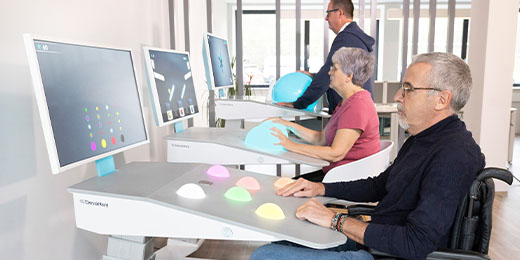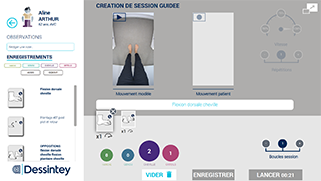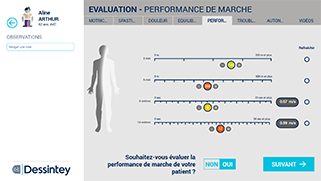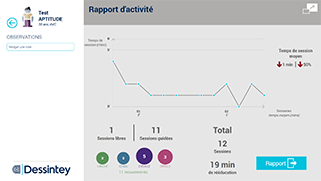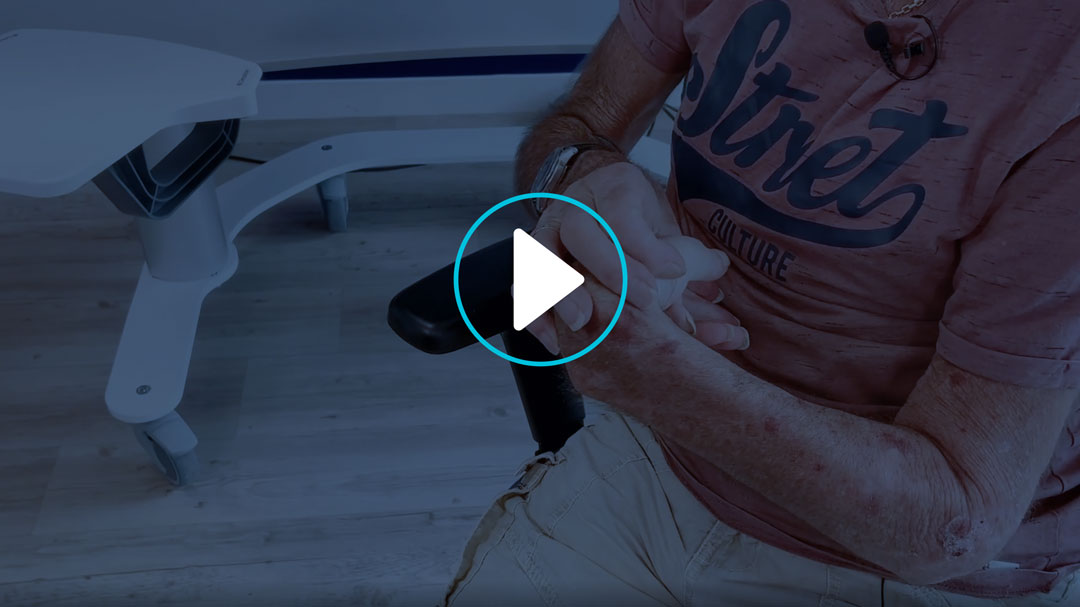Intensive Visual Simulation
IVS promotes brain plasticity
A unique technology dedicated to motor planning & central control of movement
Intensive Visual Simulation
IVS promotes brain plasticity
A unique technology dedicated to motor planning & central control of movement
Scientific
Scientific report on IVS
Download the latest studies released in 2024 on IVS technology (Intensive Visual Simulation)
Motor control principles
Action planning is quickly altered in patients
Without representation of movement, i.e. without this essential stage of action planning, the movement cannot be effective and accurate.
It’s not a problem of muscle power, it’s a problem of control of the body.”

Dr. Franco MOLTENI
Clinical Director – Villa Beretta
Rehabilitation Center, Italy
IVS3 for Upper Limbs
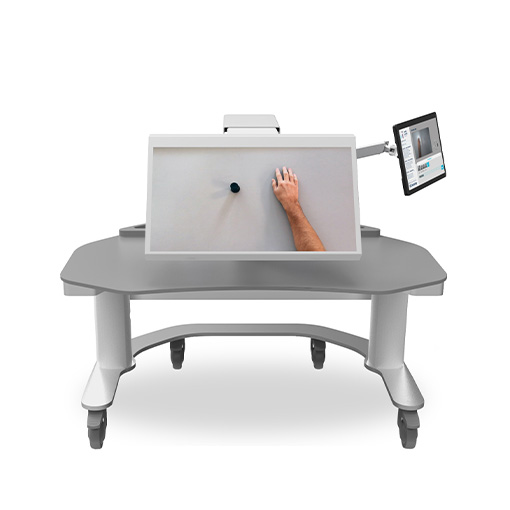
Vision plays an essential role in the early stages of reconstructing body image and motor control. With an intense immersion, IVS allows the patient to reintegrate a healthy functional limb and to focus on the representation of movement.
IVS4 for Lower Limbs
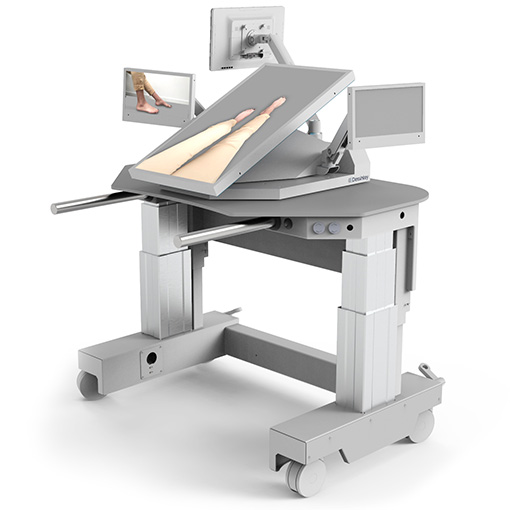
“Seeing a movement is almost like doing it.”
IVS replaces the image of the affected limb with a positive image of movement performed by the healthy limb.
Upper or Lower Limb movement observation with IVS automatically induces a cortical sensorimotor activation.
Reinstating coherence between what the patient intends to do and the sensations he perceives prompts relearning.
IVS – Intensive Visual Simulation
Positive visual feedback promotes relearning
IVS relies on brain plasticity principles.
Integrating IVS among the therapeutic pathway stimulates the central control of movement and bolster patients’ abilities in action planning.
Rehabilitation Objectives
In my daily life
Vicious circle of failure
A cascade effect
During « Intensive Visual Simulation » training
Restoring coherence between movement intention & vision
A virtuous circle
The technological platform
Personalized therapy programs
Showcasing more than 15 years of research, IVS integrates a smart therapy-based algorithm assistance to make the therapists’ day-to-day work easier.
Based on the evaluation performed by the therapist, IVS offers a variety of exercise sequences.
It recognizes the best suited movements to the patient’s impairments.
IVS manages the planning of sessions and patient’s overall program.
Why is IVS
a unique & patented technology?
- Intense immersion to reintegrate a healthy functional limb
- High level of clinical evidence on VST approaches (both for Upper & Lower Limbs)
- Neurological lateralized stimulation
- Early start of therapy, accessible to flaccid patients or cognitive disorders
- “Enhanced assistant” with diversified exercises
- Intensive therapy with few exclusion criteria
- Ultra-easy to handle: 30 sec. to start a session
- Complementary to conventional approach and robotic devices
A patient-centric solution
developed with clinicians
Evaluations
Free session
Movement library
Presentation
Progress & activity reports
IVS technology combines approaches with high level of clinical evidence on motor recovery and pain treatment
+ + + : efficacy proven in various RCT | + + : efficacy proven in review and meta‑analysis (moderate effect) | + : efficacy proven in review and meta‑analysis (low effect)
Complementarity
IVS is used in addition to other conventional therapies & technologies
IVS3 for Upper Limbs
+
- FES
- Muscle strengthening
- Task-oriented therapy
- CIMT
- Robot-assisted therapy
IVS4 for Lower Limbs
+
- Active and passive mobilization
- FES
- Trunk reinforcement & balance therapy
- Isokinetism
- Robot assisted therapy – Exoskeleton
IVS | Indications
- Stroke
- Brain injury
- Multiple sclerosis
- CRPS
- Amputation
- Cerebral palsy
- SCI
- Immobilization
- Plexus injury
- Trauma
Large inclusion criteria
- Flaccid limbs
- Spasticity
- Hemineglect
- Apraxia
- Body image disorders
- Bimanual impairments
- Aphasia
- Cognitive disorders
- Attention deficits
- Learning disabilities
- Pain
- Allodynia…
Examples of patient care
Discover
our other technologies
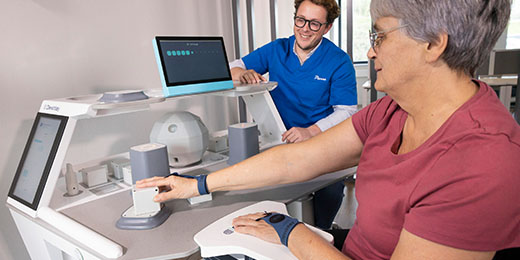
STIIMP
Implicit Induced Stimulation
